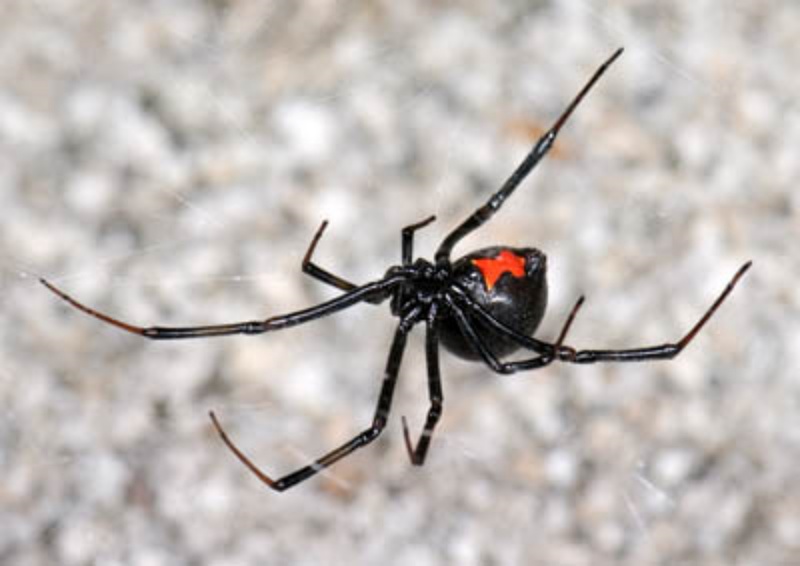
An Overview of Spiders: Their Anatomy and Characteristics
Spiders are arachnids, a class of joint-legged invertebrates that includes scorpions and ticks. They have two main body parts: the cephalothorax and the abdomen. The cephalothorax contains their eyes, mouthparts, and legs while the abdomen holds their organs for digestion, reproduction, and excretion.
One of the most distinguishing features of spiders is their ability to spin silk from specialized glands located on their abdomens. This silk can be used for many purposes such as creating webs for hunting or constructing egg sacs. Spiders also have venomous fangs that they use to subdue prey before consuming it.
There are over 45,000 known species of spiders worldwide with varying physical characteristics such as size (ranging from less than one millimeter to over 30 centimeters), coloration (from black to bright orange), and eye arrangement (some having eight eyes arranged in different patterns). Despite these differences, all spiders share common traits such as being predators that play important roles in maintaining ecological balance by controlling insect populations.
The Role of Spiders in the Ecosystem: Why They Are Important
Spiders play a vital role in the ecosystem as they are natural predators that help control insect populations. They feed on various insects such as mosquitoes, flies, and cockroaches, which can be harmful to humans and crops. Without spiders, these insect populations would increase rapidly, leading to an imbalance in the food chain.
In addition to controlling insect populations, spiders also serve as prey for other animals such as birds and lizards. This makes them an essential part of the food web. Furthermore, spider webs provide shelter for small insects like aphids and mites that are beneficial to plants by pollinating flowers or eating harmful pests.
The importance of spiders extends beyond their ecological impact; they also have cultural significance in many societies around the world. In some cultures, spiders are believed to bring good luck or ward off evil spirits. Others use spider venom for medicinal purposes due to its potential therapeutic properties. Overall, it is clear that spiders play a crucial role in maintaining balance within our ecosystem while also providing cultural value and potential medical benefits.
Spider Myths Debunked: Separating Fact from Fiction
One of the most common myths about spiders is that they are insects. In reality, spiders belong to a completely different class of arthropods called Arachnida. Unlike insects, which have three body segments and six legs, spiders have two body segments and eight legs. Additionally, while all insects have wings at some point in their life cycle, no spider species can fly.
Another myth about spiders is that they are dangerous or venomous to humans. While it’s true that some spider species do possess venom that can be harmful or even deadly to humans, the vast majority of spider bites are harmless and cause only mild symptoms like redness and itching. Furthermore, many people mistakenly attribute skin irritations or infections to spider bites when other causes are more likely.
A final myth about spiders is that they spin webs solely for catching prey. While trapping prey is certainly one function of spider webs, these intricate structures also serve as homes for many species of spiders. Some web-spinning species use their silk fibers not just for building webs but also for lining burrows or creating egg sacs. Overall, it’s important not to underestimate the complexity and diversity of these fascinating creatures!
Identifying Common Spider Species: Physical Features and Habitats
The common house spider, also known as the American House Spider, is one of the most widespread species in North America. They are small and brownish-yellow with a distinct pattern on their abdomen. These spiders prefer to build their webs in dark corners or secluded areas such as closets or basements.
Spider Control Service
Another common spider species is the Black Widow. These spiders are easily recognizable by their shiny black body and red hourglass marking on their underside. They tend to live in warm climates and can be found hiding in woodpiles, under rocks, or inside garages.
Wolf Spiders are another type of spider that can be easily identified by their large size and hairy appearance. They have excellent vision and do not build webs but instead hunt for prey on foot. Wolf Spiders typically reside outdoors but may wander indoors during colder months seeking warmth.
Spider Behavior: How They Hunt, Mate, and Communicate
Spiders are known for their unique hunting techniques. Most species of spiders use webs to trap their prey, while others actively hunt and ambush their prey. Some spiders even use camouflage to blend in with their surroundings and sneak up on unsuspecting prey. Once the spider has captured its prey, it will typically inject venom through its fangs to immobilize or kill the victim before consuming it.
Spider mating behavior can vary greatly depending on the species. In some cases, male spiders will perform elaborate courtship rituals involving dance-like movements and intricate web patterns to attract a mate. Other species may simply approach a potential mate and attempt to copulate without any prior courtship behaviors. After mating, female spiders will typically lay eggs either inside a protective sac or directly onto a surface.
While spiders do not have vocal cords like many other animals, they are still able to communicate with each other using various methods such as vibrations, chemical signals, and body language. For example, male jumping spiders will often wave their front legs in an aggressive display towards rival males while also performing complex dance routines for females during courtship. Additionally, some social spider species live together in large groups and communicate through touch and pheromones to coordinate hunting efforts and protect their young from predators.
If you are dealing with spiders in your home, Pro Pest Contol can help eliminate spiders in your home and apply a barrier around your home to minimize spider entry.
Common Spider Species and Their Behaviors: Understanding the Enemy was first seen on https://propestcontrolservices.com/





More Stories
The Role of Chimney Inspections in Homebuying
The Rise of Bed Bugs: Why Are They Making a Comeback?
Chimney Masonry Repair 101: Restoring Beauty and Functionality